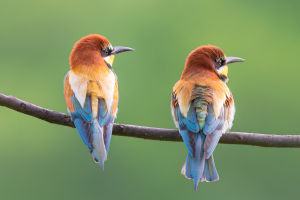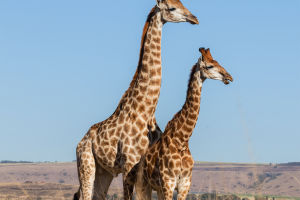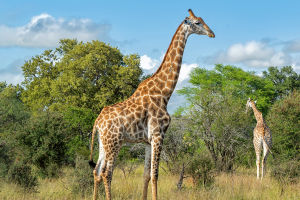Hovering Nature's Gems
Hummingbirds are among the smallest birds in the world, known for their unique flying abilities and stunning colors.
Hummingbirds are tiny, usually weighing only a few grams, but they have an incredible ability to fly, able to hover in the air, fly forward and backward quickly, and even take off vertically or fly backward.
These amazing tricks are made possible by their high-speed wingbeats, which can be flapped about 50 to 80 times per second, allowing them to move flexibly in the air.
Hummingbirds get their name from the buzzing sound they make when they fly, which is produced by the rapid flapping of their wings. Unlike most birds, hummingbirds do not rely on air currents to soar, but instead maintain flight through the continuous movement of their wings.
This special way of flying allows hummingbirds to hover in the air, allowing them to easily collect nectar from flowers. The main food of hummingbirds is nectar, and they also prey on small insects and spiders to supplement protein.
Hummingbirds have brightly colored feathers, especially males, whose feathers often reflect a jewel-like luster. These bright colors not only make them look dazzling in the sun but also play an important role in attracting mates.
Hummingbirds' colors are usually created by tiny feather structures reflecting light, rather than pigments, so when the angle of light changes, the color of the hummingbird will also change, showing a beautiful iridescent effect.
Hummingbirds live mainly in the Americas, ranging from Alaska in North America to Chile in South America, but their most common habitats are tropical and subtropical regions in Central and South America.
Hummingbirds mostly prefer to live near open forests, gardens, and meadows, which are rich in flowers and provide them with ample food sources. Due to their unique body shape and needs, hummingbird migration behavior is also a wonder.
Some species of hummingbirds will travel long distances from North America to Central America to spend the winter, and despite their tiny size, they show great endurance when flying across vast oceans and lands.
Hummingbirds have long and slender beaks that are evolved specifically for collecting nectar. They have brush-like structures on their tongues that help roll nectar into their mouths. This sophisticated beak design allows hummingbirds to reach deep into flowers that most birds cannot reach to extract nectar.
Since hummingbirds often shuttle between different flowers, they inadvertently play an important role in pollination during the process of foraging, becoming an important medium for the reproduction of many plants.
Hummingbirds have extremely high energy consumption because they need to frequently vibrate their wings and maintain high-speed flight.
To do this, hummingbirds must consume a large amount of nectar and insects every day and even need to enter a hibernation-like state at night, called "hibernation", to save energy. In this state, the body temperature and heart rate of hummingbirds will drop significantly, allowing them to survive cold or food-scarce nights.
Despite their small size, hummingbirds are very brave in their behavior. Sometimes, they will fight fiercely with birds much larger than themselves or even small mammals to protect their territory. Hummingbirds will attack with fast flight and sharp beaks, showing their unique fighting spirit and courage.
Hummingbirds are one of the most charming species in nature. Not only are they extraordinary in appearance and excellent in flying ability, but they also play an important role in the ecosystem.
Through their daily activities, hummingbirds help maintain the reproduction and survival of many plants, making them not only a miracle of nature but also an indispensable link in the ecological chain.


